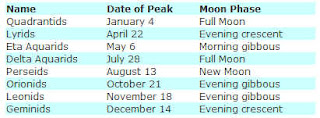
Just a reminder for everyone in the USA. Tonight is the Perseid meteor shower. It is supposed to be a great show with lots of shooting stars about 10-12 per hour tonight. Look to the Northern Sky.
It's going to be a great show," said Bill Cooke of NASA's Meteoroid Environment Office at the Marshall Space Flight Center in Alabama. "The Moon is new on August 12, which means no moonlight, dark skies and plenty of meteors."
Observing tips from www.Space.com:
To see the show, one need only find a comfortable spot with a clear view of the northeast horizon, away from local lights. A dark rural location is best. Lie back on a blanket or lounge chair and scan the entire sky. In the late evening, starting around 9 p.m. local time, sharp-eyed observers might see "earthgrazing" meteors that skim the northeast horizon.
"Earthgrazers are long, slow and colorful," Cooke said. "They are among the most beautiful of meteors." But don't expect more than a handful in an hour, he said.
To see the show, one need only find a comfortable spot with a clear view of the northeast horizon, away from local lights. A dark rural location is best. Lie back on a blanket or lounge chair and scan the entire sky. In the late evening, starting around 9 p.m. local time, sharp-eyed observers might see "earthgrazing" meteors that skim the northeast horizon.
"Earthgrazers are long, slow and colorful," Cooke said. "They are among the most beautiful of meteors." But don't expect more than a handful in an hour, he said.
Perseid meteoroids are exceptionally fast, entering Earth's atmosphere at roughly 133,200 mph (60 kilometers per second) relative to the planet, slamming into the air like bugs hitting a windshield.
What is your opinion?




